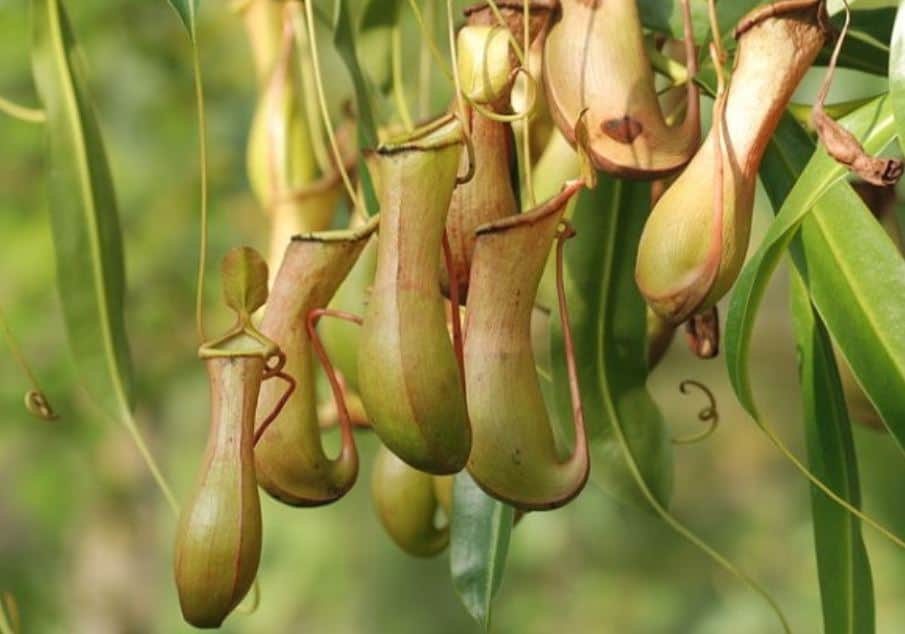Nepenthes, often known as pitcher plants, are indigenous to tropical areas of Australia, Madagascar, South East Asia, and India. The swellings that resemble little pitcher-shaped bumps in the middle of the leaves are whence they earn their popular name. In colder areas, nepenthes pitcher plants are often cultivated inside. If you have one, you could see the leaves of your pitcher plant turning crimson. A pitcher plant with red leaves might have several causes, some needing addressing.

Nepenthes Pitcher Plants
The pitchers of Nepenthes pitcher plants are used to attract insects, not for pollination but rather for food. The nectar secretions and color of the pitchers attract insects to them.
Visitors’ insects glide inside the pitcher due to the leaf swelling’s slick rim and interior walls. The Nepenthes pitcher plants consume them for nutrition when they get stuck in the digestive fluid.
Red leaves on a pitcher plant
Green is the predominant color of mature pitcher plant leaves. If you see the leaves on your pitcher plant becoming red, there could or might not be an issue.
Young pitcher plant leaves that are becoming red may be entirely typical, given their coloring. Frequently, new leaves develop with a pronounced crimson hue.
On the other side, it might be concerning if you see adult pitcher plant leaves becoming crimson. A leaf’s position on the vine may tell you if it is young or mature. Continue reading to learn how to mend nepenthes with red leaves.
Red leaves fixing a Nepenthes
Too Much Light
Red leaves on pitcher plants may indicate “sunburn,” which is brought on by excessive light. They typically need strong light but not a lot of direct sunlight.
Plant lights may help indoor plants grow, provided they are wide spectrum and maintained far enough away to avoid overheating or burning. The leaves towards the light source may become red if there is too much of it. Remove the plant from the light source to solve this issue.
Too Little Phosphorous
When the leaves on your pitcher plant turn dark red in the fall, there may not be enough phosphate in the soil. The insects that carnivorous nepenthes pitcher plants attract and consume provide phosphorus.
These plants use phosphorus from insect diets to increase the amount of green chlorophyll in their leaves for photosynthesis. It’s possible that a pitcher plant with red leaves didn’t eat enough insects to accomplish this. Flies are little insects that you may put in your mature pitchers as a remedy.

